The Essential Travel Medicine Kit
If you travel, then you must have a ready travel medicine kit that you can easy carry in your carry-on luggage, separate from the pills you may need on a daily basis for your diseases.
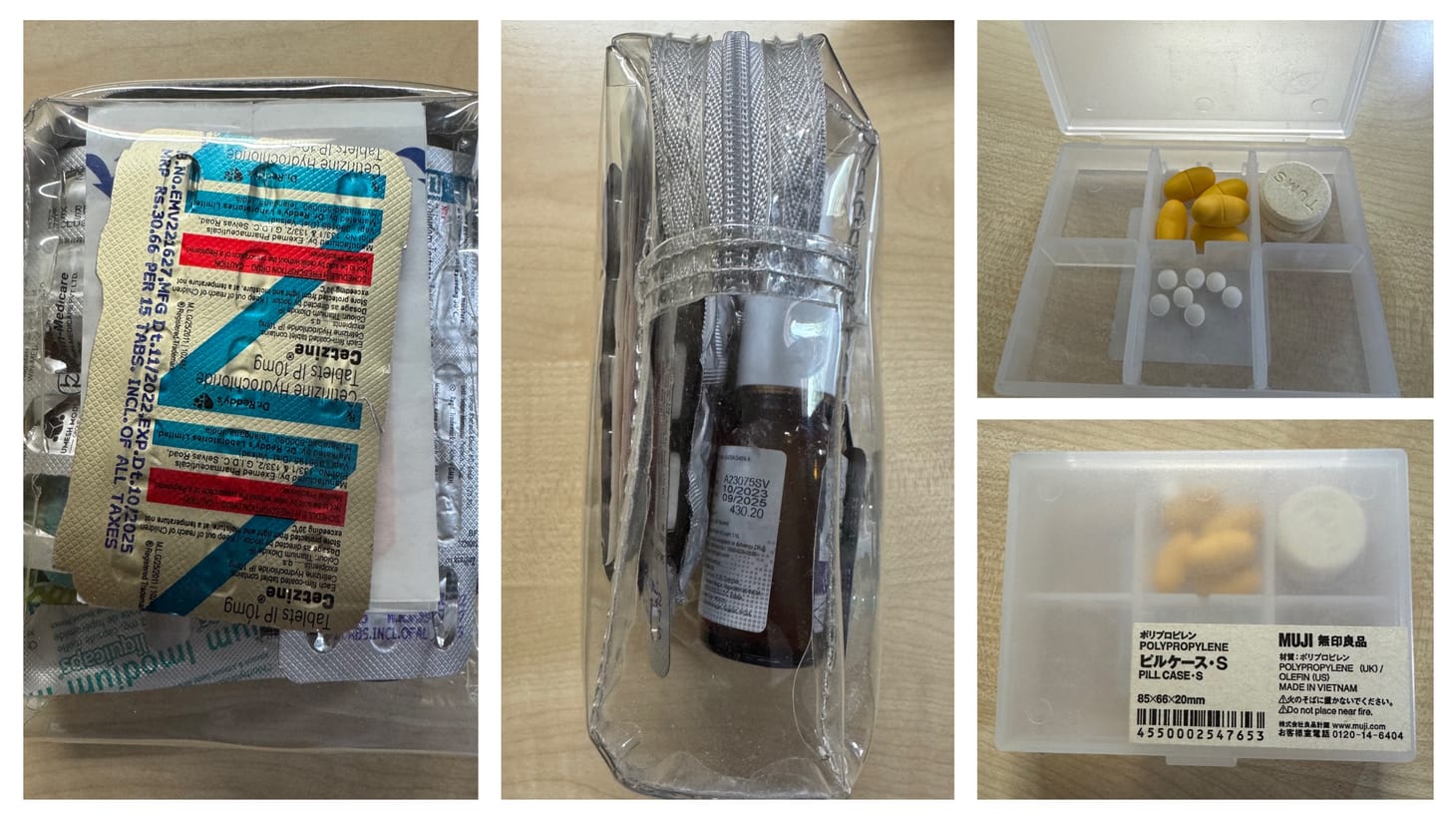
The Book - Kindle Version Now Available Worldwide
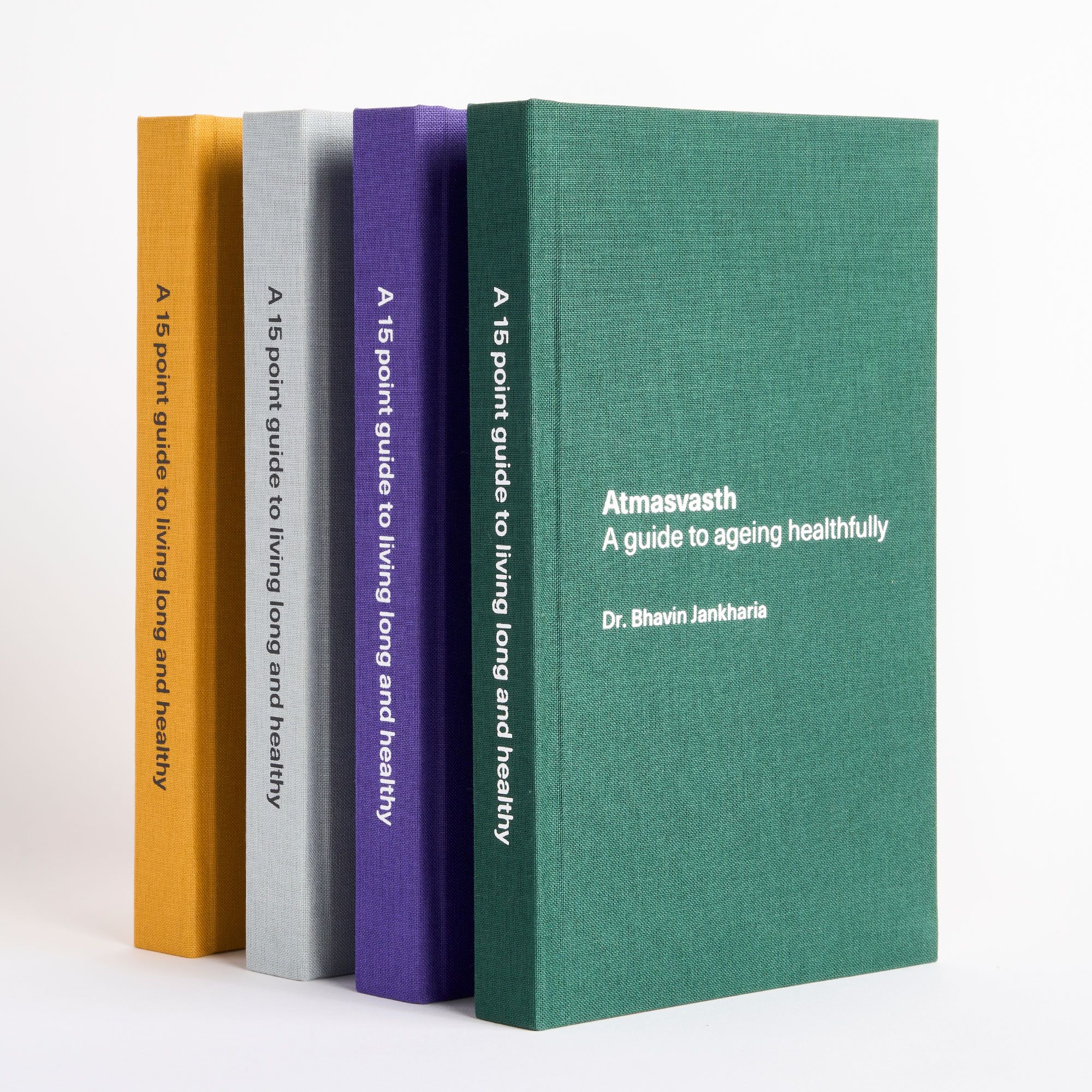
The Detailed 15-Point Guide to Live Long, Healthy
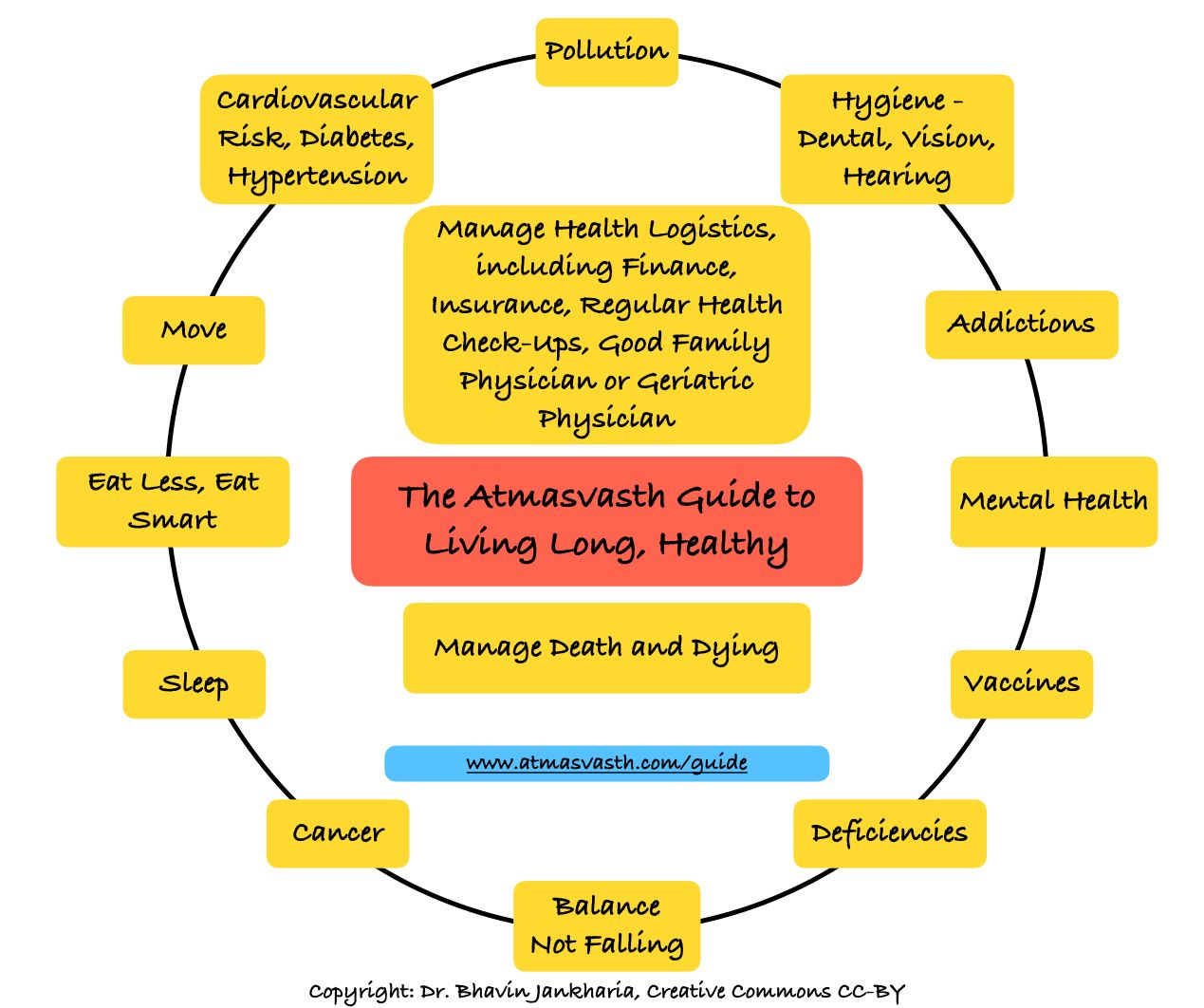
Audio
Text
Many of us travel regularly by road, train, or air, domestically or internationally and we need to be self-sufficient with medicines when traveling.
Here’s my essential travel kit. Please do not hesitate to write in if you have something to add or subtract.
Medicines
Take all essential medicines for your diseases. Ideally, take one or two extra pills than needed for the duration of the journey and use a pillbox to keep them separate from each other and from the rest of the travel med kit.
The travel medicine kit should contain the following medicines:
- Paracetamol (Crocin/Dolo/Tylenol/Panadol) - 1 strip (for fever, pain).
- (Woveran, Enzoflam, Myospaz) - 1 strip each (for muscle and joint pains). Woveran and Enzoflam contain diclofenac, with Enzoflam also containing paracetamol. Myospaz is chlorzoxazone and paracetamol. I use Enzoflam for muscle soreness and pain and Myospaz for cramps.
- Pain patches (not available in India) - 2 or 3 (for muscle pain and soreness).
- Loperamide (Imodium) - 1 strip (for diarrhea).
- Ondansetron (Ondem-MD 4) - for vomiting. These dissolve on the tongue, so even if you can’t keep anything down, they will work.
- Dimenhydrinate (Gravol) - for motion sickness.
- Antihistaminic (Cetzine/Bilastine/Allegra) - 1 strip (allergies).
- Fluticasone nasal spray (any good brand) - for sudden cold and dripping nose.
- Antacids (Digene/TUMS) - for reflux.
- PPI - pantoprazole (PAN-D) - for reflux, if oral antacids are ineffective.
- Zolpidem (Zolfresh) - 1 strip of 5 mg (for sleep issues).
- Alprazolam (Restyl) - 1 strip (anxiety).
I haven’t included anti-malarials, as they don’t apply to Indians traveling from India. However, mosquito repellents help (see below).
Avoid laxatives because their effects are unpredictable and can ruin your day with constant urges. If constipated for a day or two, don’t bother. Constipation is better than diarrhea when traveling.
Some medicines may be needed in specific areas, for example, Diamox (acetazolamide) in Ladakh to prevent altitude sickness. Since it needs to be taken in advance, you’d carry it separately anyway.
Supplies
- Band-Aids - any brand - if you get injured.
- Mosquito repellents - small tubes or cloth patches, for outdoors or high mosquito burden areas.
- Spare glasses - if you wear spectacles and can't do without them. These don’t have to be in your travel kit but should be on your travel checklist.
I’m not including items like sunscreen and wipes, which vary based on your travel location or specific hiking or trekking requirements.
Create a travel kit and leave it in the carry-on you use regularly. Use the travel medicine pouch only when traveling, never at home and keep it separate from the home medicine bag. Replace any used medicine immediately. The drugs may expire without being used. That’s fine. Donate them if they’re near expiry or throw them if you forgot their expiry date. Replace the drugs in your travel medicine kit every 2-3 years. If family members travel separately, each should have their own travel medicine kit.
Though they seem numerous, all 12 items and band-aids can easily fit into a small transparent pouch like this one from Muji. The pouch must be small since it has to be in your carry-on luggage and NOT checked in.
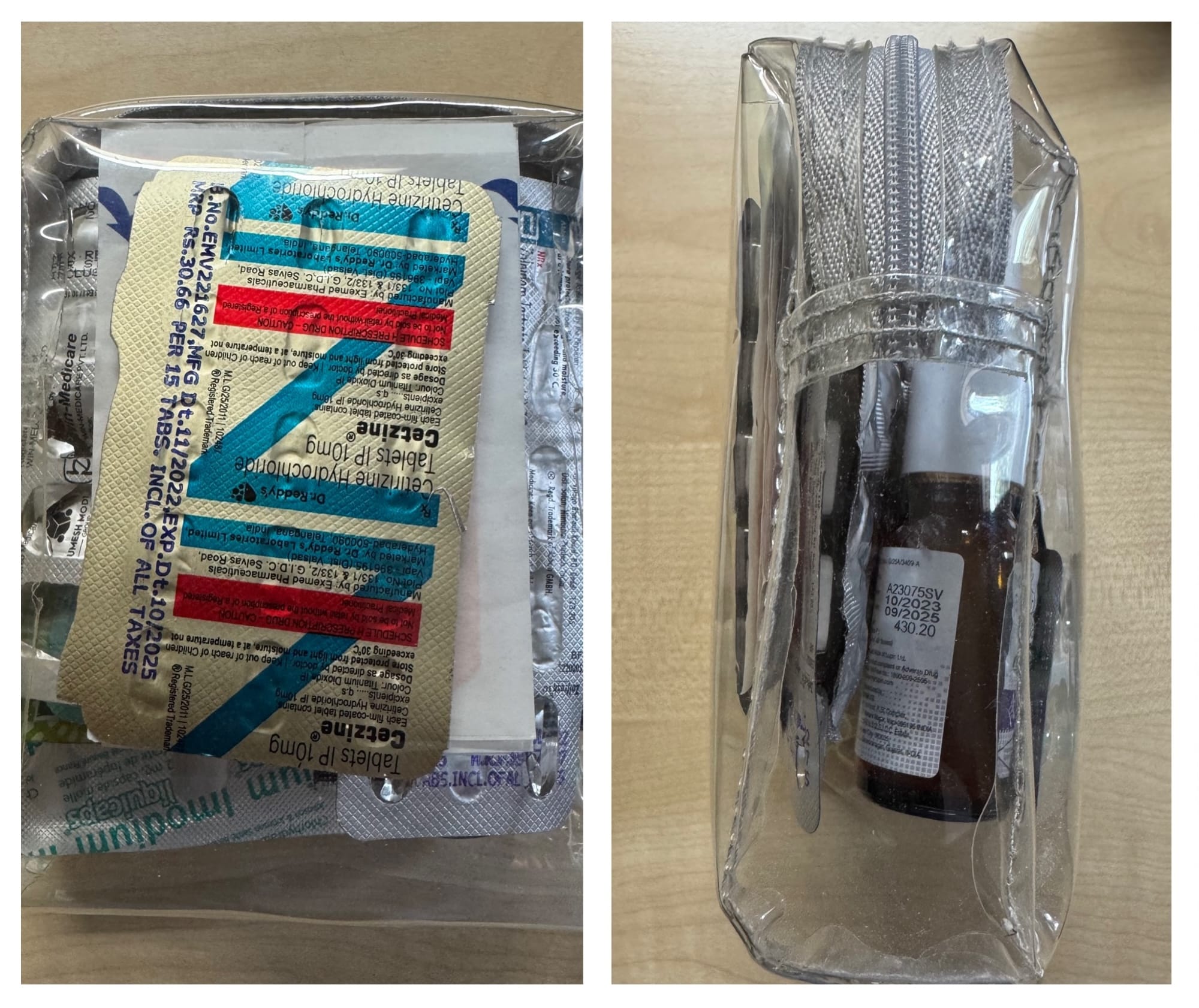
I keep TUMS in a small pillbox from Muji with a couple of daily medicines. You can easily carry 6 different meds for daily needs in a pillbox like this or use the numbered (days/weeks) ones available on Amazon.
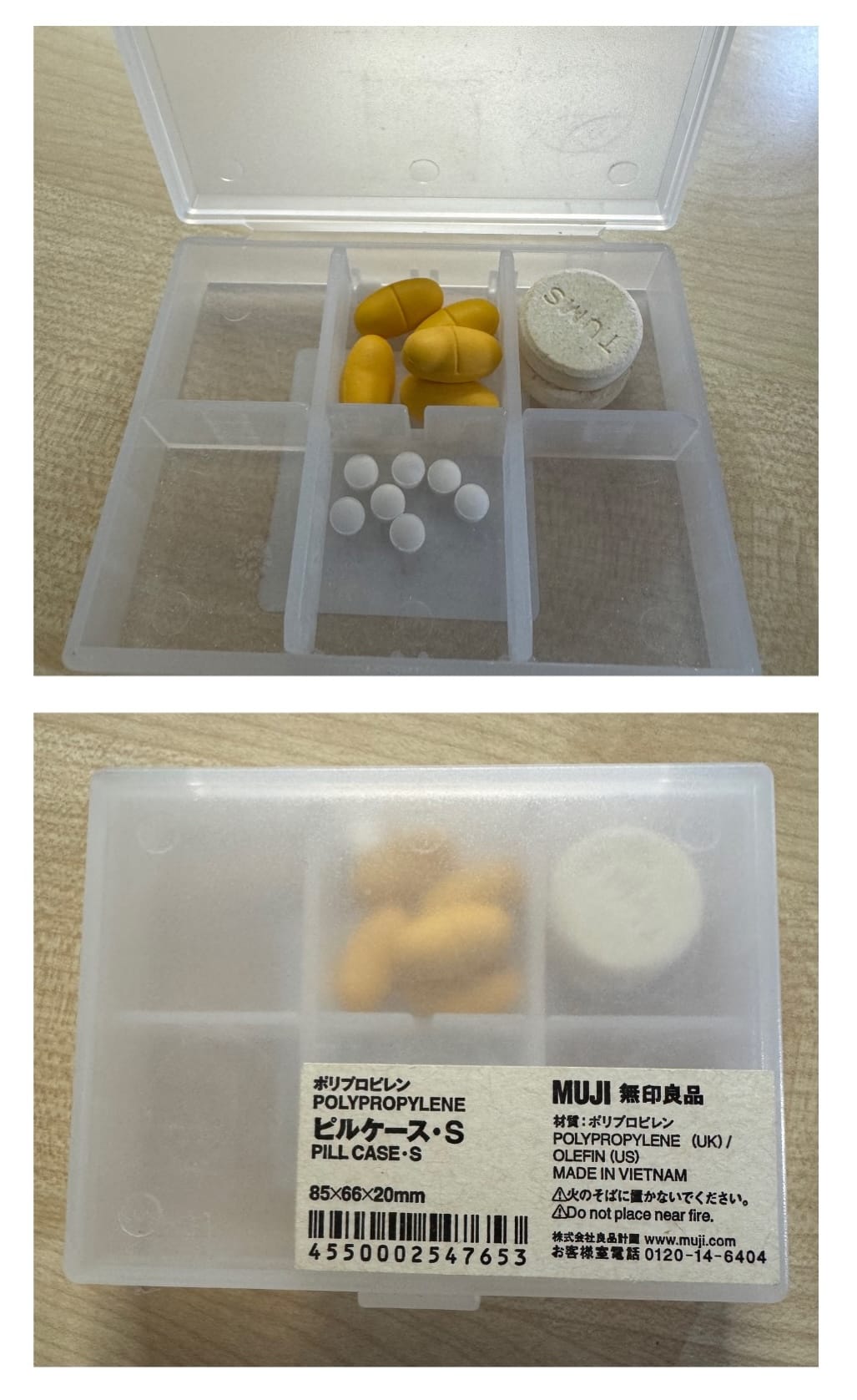
You may never need the travel medicine kit. In Indian urban cities, pharmacies sell most of what you need. However, remember that Zolfresh, Restyl, etc. require a prescription and you may not find a doctor to write you one. Also, it may be hard to find a pharmacy at night, in flight, on a train, or on the road, especially when you need one.
In smaller cities, towns and villages, brands differ and may be spurious. Avoid generics and use trusted brands from reliable pharmacies. Buy supplies before traveling to avoid searching for medicines when packing or if you fall sick.
When traveling abroad, especially in the rich, minority world, some drugs are unavailable without a prescription and seeing a doctor can be challenging. Luckily, many drugs on our list, except for the sleeping and anxiety ones, are usually available over-the-counter. Stock up on pain patches and TUMS, because we don’t get them in India.
I don’t like carrying antibiotics. If you think you need one, you likely also need to see a doctor. Self-medicating with antibiotics isn’t a good idea.
This is part of our atmasvasth quest to live long, healthy. We should be ready for common sickness situations when traveling. The best way is to be prepared with a standard emergency travel med kit, which we should prepare ourselves and carry in our carry-on luggage. We should replace the meds if we use them or if they expire. This is in addition to carrying our regular meds for whatever disease we may have, managed separately from this essential travel med kit.
Atmasvasth Newsletter
Join the newsletter to receive the latest updates in your inbox.
